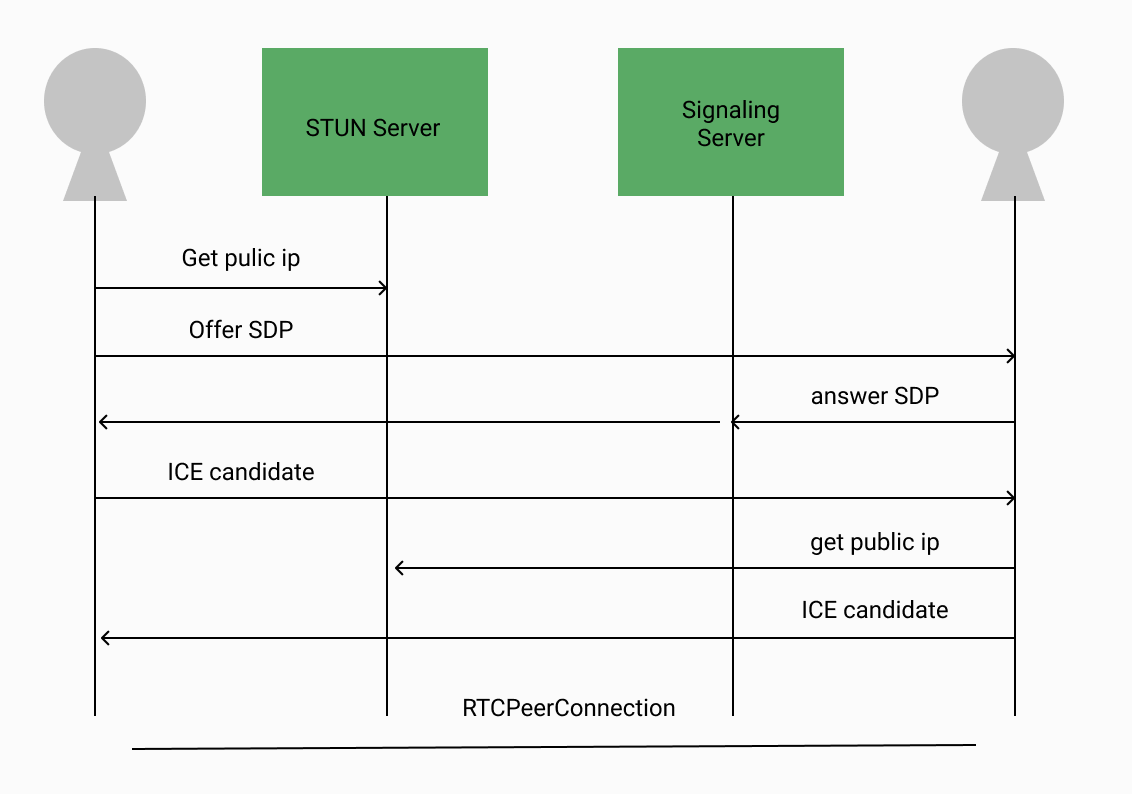express.io = express + socket.io
express.ioをインストールして、サーバーを立てるまで
### express.io install
package.json
{
"name": "test-webrtc",
"version": "0.0.1",
"private": true,
"dependencies": {
"express": "4.x",
"ejs": "3.0.1",
"express.io": "1.x",
"coffee-script": "~1.6.3",
"connect": "*"
}
}
$ npm update
### server.js
var express = require('express.io');
var app = express();
var PORT = 3000;
var fs = require("fs");
var https = require("https");
var options = {
key: fs.readFileSync('key.pem'),
cert: fs.readFileSync('server.crt')
}
app.https(options).io();
console.log('server started' + PORT);
app.use(express.static(__dirname + '/public'));
app.get('/', function(req, res){
res.render('index.ejs');
});
app.io.route('ready', function(req){
req.io.join(req.data)
app.io.room(req.data).broadcast('announce', {
message: 'New client in the ' + req.data + ' room.'
})
})
app.listen(PORT);
### index.ejs
<!DOCTYPE html>
<html lang="en">
<head>
<meta charset="UTF-8">
<title>WebRTC</title>
<link rel="stylesheet" type="text/css" href="public/styles.css">
<script src="/socket.io/socket.io.js"></script>
</head>
<body>
<p><button id="takeProfilePicture" type="button" autofocus="true">Create Profile Picture</button></p>
<video id="videoTag" autoplay></video>
<div>
<label>Your Name</label><input id="myName" type="text">
<label>Your Name</label><input id="myMessage" type="text">
<input id="sendMessage" type="submit">
<div id="chatArea">Message: output:<br></div>
</div>
<script>
navigator.getUserMedia = navigator.getUserMedia || navigator.webkitGetUserMedia || window.navigator.mozGetUserMedia;
var constraints = {audio: false, video: {
mandatory: {
maxWidth: 240,
maxHeight: 240
}
}
};
var videoArea = document.querySelector("video");
var myName = document.querySelector("#myName");
var myMessage = document.querySelector("#myMessage");
var sendMessage = document.querySelector("#sendMessage");
var chatArea = document.querySelector("#chatArea");
var ROOM = "chat";
io = io.connect();
io.emit('ready', ROOM);
io.on('announce', function(data){
displayMessage(data.message);
});
function displayMessage(message){
chatArea.innerHTML = chatArea.innerHTML + "<br>" + message;
}
navigator.getUserMedia(constraints, onSuccess, onError);
function onSuccess(stream){
console.log("Success! we have a stream!");
// videoArea.src = window.URL.createObjectURL(stream);
// videoArea.className = "grayscale_filter";
videoArea.srcObject = stream;
}
function onError(error){
console.log("Error with getUserMedia: ", error);
}
</script>
</body>
</html>
$npm server.js
socket ioとは、web soketにより、双方向通信を簡単に記述できる
複数ブラウザでテストし、io.emit(‘ready’, ROOM);となった際に、chatArea.innerHTML = chatArea.innerHTML + “
” + message;で、’New client in the ‘ + req.data + ‘ room.’が追加される

